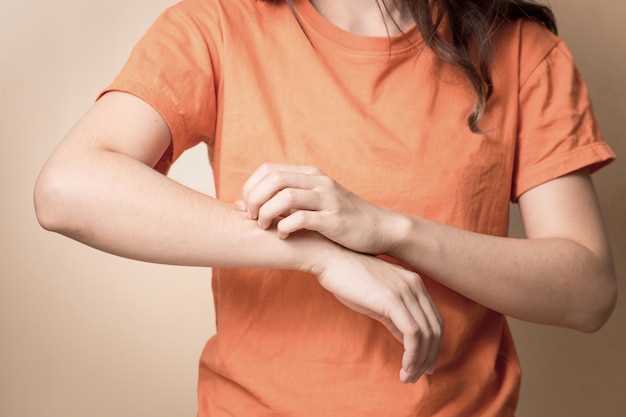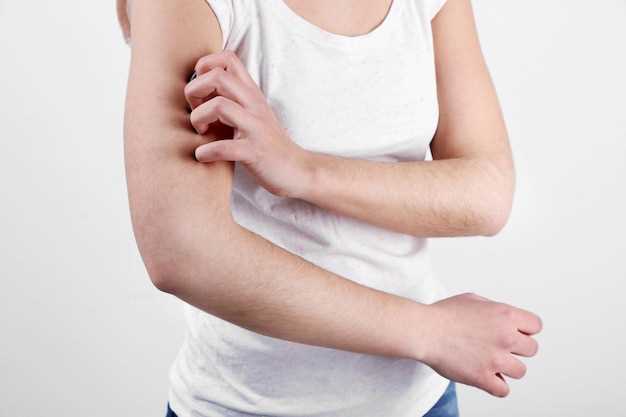
Are you suffering from a Metronidazole rash on your arms? This irritating skin condition can cause discomfort and embarrassment. Don’t let it hold you back any longer!
Our specially formulated rash cream is designed to soothe and heal your skin quickly and effectively. Say goodbye to itching and redness!
Try our Metronidazole rash cream today and experience the relief you deserve. Your arms will thank you!
Causes and Symptoms of Metronidazole Rash on Arms

Metronidazole rash on the arms can be caused by an allergic reaction to the medication. The rash may appear as red, raised bumps or as a flat, discolored rash on the skin. It can be itchy and uncomfortable, leading to inflammation and irritation.
Symptoms:
- Redness and irritation on the arms
- Raised bumps or hives
- Itching and discomfort
- Swelling and inflammation
The symptoms of metronidazole rash on the arms can vary from person to person, and the severity of the rash may also differ. It is essential to seek medical attention if you experience severe symptoms or if the rash does not improve with home remedies.
Causes and Symptoms

Metronidazole rash on arms can be caused by an allergic reaction to the medication. Symptoms of metronidazole rash on arms may include redness, itching, swelling, and a rash that may be raised or flat. In severe cases, the rash may blister or peel, causing discomfort and pain. It is important to consult a healthcare provider if you experience any of these symptoms after taking metronidazole.
Prevention Measures
Preventing a Metronidazole rash on arms involves taking certain precautions. Here are some key prevention measures to consider:
- Avoid prolonged or excessive exposure to the sun, as Metronidazole can increase skin sensitivity to UV rays.
- Use sunscreen with a high SPF when going outdoors to protect your skin from sun damage.
- Avoid using harsh chemical-based soaps or skincare products that may irritate your skin.
- Keep your skin well moisturized to maintain its natural barrier function and prevent dryness.
- If you notice any signs of skin irritation or rash, stop using Metronidazole and consult your healthcare provider for alternative treatment options.
Prevention Measures
Preventive measures can help reduce the risk of developing a Metronidazole rash on the arms:
- Avoid prolonged exposure to the sun and use sunscreen with a high SPF.
- Wear protective clothing, such as long sleeves, to shield the skin from harmful UV rays.
- Stay hydrated by drinking plenty of water to keep the skin healthy and hydrated.
- Avoid using harsh or irritating detergents or soaps that can cause skin irritation.
- Be cautious when using cosmetics or skincare products and choose hypoallergenic options.
Following these prevention measures can help minimize the risk of developing a Metronidazole rash on the arms and promote overall skin health.
Home Remedies for Relief
1. Cold Compress: Applying a cold compress to the affected area can help reduce itching and inflammation associated with a Metronidazole rash on the arms.
2. Aloe Vera Gel: Aloe vera has soothing properties that can help calm irritated skin. Apply a thin layer of aloe vera gel to the rash to promote healing.
3. Oatmeal Bath: Taking an oatmeal bath can provide relief from itching and soothe inflamed skin. Mix colloidal oatmeal in warm water and soak for 15-20 minutes.
4. Avoid Harsh Chemicals: To prevent further irritation, avoid using harsh soaps or perfumed products on the affected area.
5. Keep Skin Hydrated: Moisturize the rash with a gentle, fragrance-free moisturizer to help keep the skin hydrated and promote healing.
6. Over-the-Counter Antihistamines: If itching is severe, consider taking over-the-counter antihistamines to help alleviate discomfort.
7. Consult a Dermatologist: If home remedies do not provide relief or if the rash worsens, consult a dermatologist for further evaluation and treatment.
When to Consult a Doctor
If you experience a Metronidazole rash on your arms that does not improve or worsens with time, it is essential to consult a healthcare provider promptly. Additionally, if the rash is accompanied by severe pain, swelling, blistering, or signs of infection such as warmth, redness, or pus, seek medical attention immediately. It is important not to ignore any allergic reactions or adverse effects to ensure proper diagnosis and treatment.
